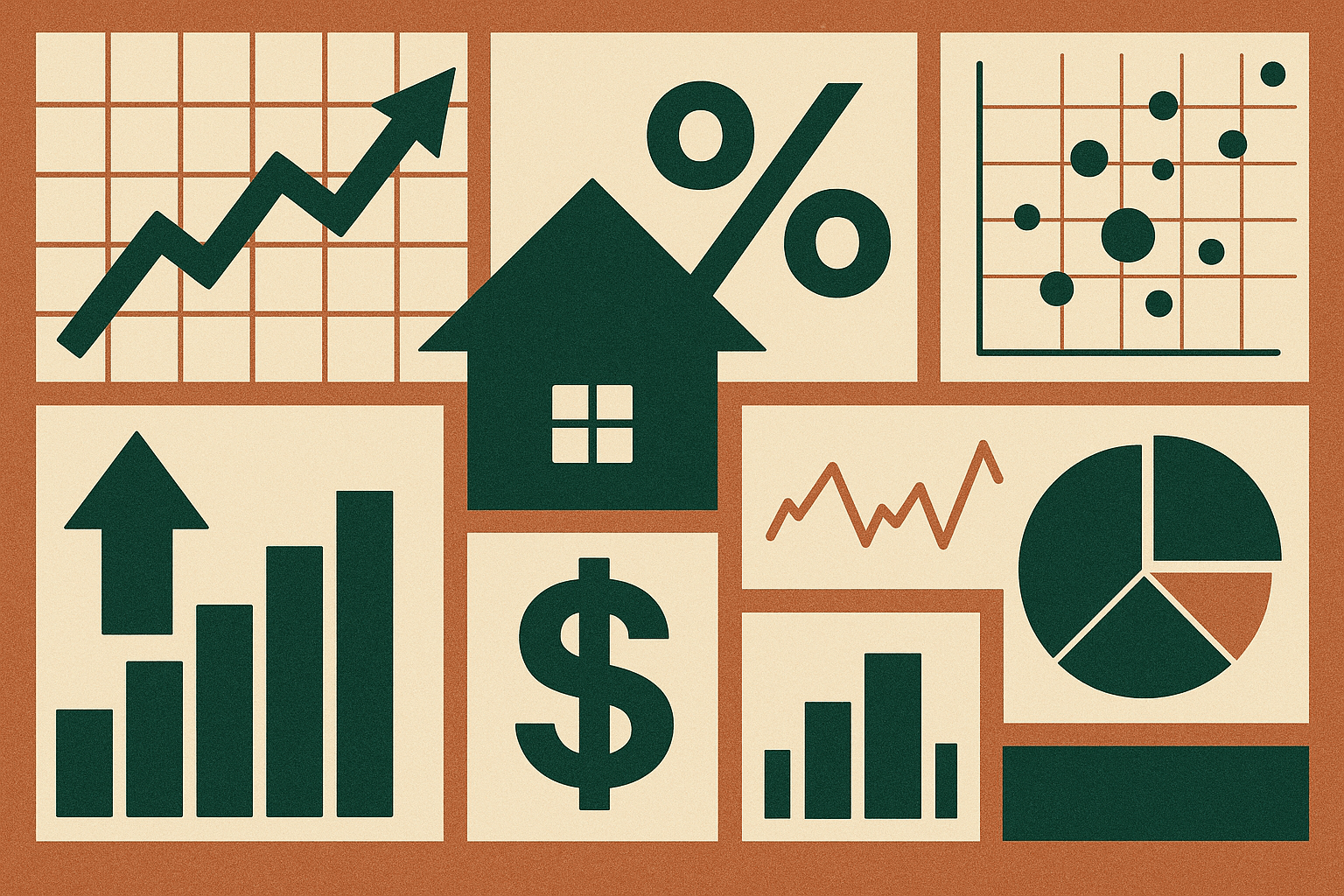Invest
Why Aussie homes are turning into stepping stones for the new generation
Invest
Why Aussie homes are turning into stepping stones for the new generation
A new cohort of buyers is treating their first property as a launchpad, not a destination—and the mortgage industry is pivoting in lockstep.
Why Aussie homes are turning into stepping stones for the new generation
A new cohort of buyers is treating their first property as a launchpad, not a destination—and the mortgage industry is pivoting in lockstep.

Mortgage Choice data shows a decisive generational tilt toward ‘stepping‑stone’ strategies, coinciding with a resurgence in investor lending and tight rental markets. Lenders, brokers and developers are redesigning products, advice and risk models to ride the shift. For executives, the prize is clear: early movers can capture a structurally different customer lifetime value curve.
The rise of the stepping‑stone buyer
Affordability pressures, higher interest rates and ultra‑tight rental markets have pushed first‑time buyers to rethink the path to ownership. Mortgage Choice’s Home Loan Report signals a decisive change in intent: a majority of Millennials (54%) and nearly half of Gen Z (47%) view their first purchase as a stepping stone rather than a permanent residence, compared with just 35% of Baby Boomers. In practice, that means buying where the numbers work—often as an investor—while continuing to live where jobs and lifestyle demand outstrip purchasing power.
This behavioural shift aligns with market data. Through 2024, Australian Bureau of Statistics (ABS) Lending Indicators show investor loan commitments running at multi‑year highs and frequently above $10 billion per month, outpacing owner‑occupier growth. At the same time, gross rental yields in the combined capitals have hovered around the 3.7–4.1% range while vacancy rates have sat near historic lows (circa ~1–1.5% in many cities according to industry trackers). The arithmetic is compelling for a generation optimising returns and optionality over permanence.
Local policy architecture amplifies the trend. Negative gearing and the capital gains tax discount support leveraged investment; state‑based stamp duty concessions and frequent first‑home incentives shape entry points; and APRA’s 3‑percentage‑point serviceability buffer continues to discipline risk. Put simply, the incentives and constraints of Australia’s system make a stepping‑stone playbook both rational and scalable.

How the industry pivoted
Mortgage brokers, lenders and developers made a strategic call: treat stepping‑stone buyers as a distinct, high‑lifetime‑value segment. Broking networks like Mortgage Choice leaned into investor education, product structuring and portfolio planning for first‑timers. Major and mid‑tier lenders refreshed investor offerings, built digital journeys that incorporate rental income and expense modelling, and refined credit policy for multi‑property trajectories. Developers and project marketers adjusted go‑to‑market narratives toward yield, strata costs and rentability alongside lifestyle messaging.
At the executive level, three priorities dominated:
- Segment expansion: Target Gen Z and Millennial “rentvestors” with tailored funnels, content and calculators that model stepping from investment to future owner‑occupation.
- Product flexibility: Offer split loans, offset accounts, interest‑only periods transitioning to principal and interest, and family‑guarantee options to accelerate entry while managing cash flow.
- Risk recalibration: Strengthen income shading on rent, refine LVR tiers for investors, and align pricing to portfolio complexity without throttling qualified demand.
The operating model for stepping‑stone strategies
Winning players executed across the full stack—product, process and partnerships.
- Product design: Lenders bundled offset accounts with interest‑only windows for the initial investment phase, paired with automatic reversion to principal and interest to mitigate long‑run risk. Split loans allowed buyers to hedge rate paths. Fee structures and redraw features aimed to improve cash‑flow resilience.
- Credit policy and analytics: Underwriting engines factored vacancy buffers, landlord insurance, strata/maintenance allowances and realistic rental appraisals from third‑party data. Some lenders embedded granular postcode‑level rent and yield analytics to avoid over‑reliance on headline medians.
- Digital experience: Brokers deployed self‑service tools that simulate portfolio paths (e.g., time to equity milestones, tax impacts under different holding periods) and pre‑qualification journeys that incorporate rental income and expected expenses. API integrations pulled rental estimates and suburb‑level demand metrics into advice workflows.
- Education and compliance: Networks intensified investor‑literacy programs—depreciation schedules, land tax exposure, cash‑flow stress testing at higher rates—while tightening responsible‑lending documentation to satisfy regulatory scrutiny.
- Ecosystem partnerships: Alliances with buyers’ agents, property managers and proptech valuation providers created a more joined‑up experience, improving conversion and early‑tenancy outcomes.
What the numbers say
While precise firm‑level disclosures vary, market‑level signals are unambiguous.
- Investor lending momentum: ABS lending data in 2024 recorded investor loan commitments at or near record levels and often above $10 billion per month, with annual growth rates outpacing owner‑occupiers. This aligns with Mortgage Choice’s observation of sustained demand for investment‑led entry strategies.
- Loan composition and size: Industry reporting through 2024 indicated a rising share of investment loan applications within broker channels and higher average loan sizes consistent with dwelling price gains and portfolio strategies.
- Yield and occupancy tailwinds: Gross yields in the 3.7–4.1% band, combined with sub‑1.5% vacancy rates in many markets, supported serviceability models and reduced leasing risk for first‑time investors.
- Customer lifetime value (CLV): Firms that onboard stepping‑stone buyers report longer, multi‑product relationships—loan top‑ups, refinancing, subsequent purchases and cross‑sell into insurance and wealth—materially lifting CLV versus single‑property owner‑occupiers.
Put together, the commercial impact is a deeper pipeline of repeat transactions and fee income for brokers and lenders, with lower acquisition costs over time as content and analytics do more of the origination heavy lifting.
What leaders can bank on
- Business impact: Stepping‑stone buyers behave like small enterprises. They need cash‑flow tools, tax‑aware structuring and portfolio dashboards. Build offerings accordingly and you’ll increase retention and refinance defences.
- Competitive advantage: Data‑rich pre‑approval journeys that price risk precisely (rather than bluntly) convert better. Integrate suburb‑level rental analytics, APRA‑buffer stress tests and realistic expense modelling to differentiate without loosening standards.
- Implementation reality: The friction isn’t origination; it’s post‑settlement. Proactive tenancy support, insurance bundling and annual portfolio reviews reduce churn and arrears risk—critical at higher rates.
- Risk management: Beware concentration risk in investor‑heavy postcodes. Use heatmaps of listing supply, build‑to‑rent pipelines and university/transport catchment shifts to cap exposures.
- Policy sensitivity: Strategy must be robust to potential changes in negative gearing, land tax regimes and stamp duty concessions. Maintain scenario playbooks for policy shocks and for rate‑cut cycles that could re‑tilt demand to owner‑occupiers.
Technical deep dive: The mechanics that matter
Three technical levers define success with stepping‑stone customers:
- Serviceability under stress: Underwrite at APRA’s buffer plus idiosyncratic cash‑flow risk (vacancy periods, maintenance spikes). Incorporate rent sensitivity to supply shocks and migration flows.
- Amortisation choreography: Pair initial interest‑only periods with scheduled step‑ups to principal and interest timed to expected wage growth or equity release. Use split structures to hedge rate trajectory.
- Equity velocity: Model time‑to‑equity milestones with realistic price growth and principal reduction. Avoid over‑optimistic appreciation; prioritise net yield and total return after tax.
Market context and international parallels
Australia’s stepping‑stone moment rhymes with the UK’s long‑standing “property ladder” and US “house‑hacking” dynamics, but with local twists: more generous tax settings for leveraged property, a broker‑dominated origination channel, and tighter rental markets. That mix accelerates investor entry while magnifying the need for prudential guardrails.
Future outlook: What changes next
Economists broadly expect investor appetite to remain firm while rental markets are tight and rates normalise from 2025 onward. If and when rates ease, some stepping‑stone buyers will pivot to owner‑occupation, but the behaviour—treating property as a portfolio, not a singular milestone—will persist. The wildcards are policy and supply: adjustments to negative gearing or CGT, and the pace of build‑to‑rent and infill approvals, could reshape returns and sequencing.
For executives, the strategic roadmap is clear: double down on segmented origination, build cash‑flow‑resilient products, hard‑wire portfolio analytics into advice, and prepare for regulatory evolution. This isn’t a passing fad—it’s a structural reset of how a generation builds wealth.

Property
Hidden cost, higher prices: Why a council fee fight matters for Australia’s housing pipeline
A dispute between the Housing Industry Association and Goulburn Mulwaree Council over development cost estimates is more than a local skirmish—it spotlights a systemic pricing lever that can compound ...Read more

Property
Rate cuts ignite an upsizing wave: how to win the next phase of Australia’s housing cycle
Cheaper money is reviving borrowing capacity and confidence, and upsizers are back in force — most visibly at auctions where clearance rates have lifted to yearly highs. The ripple effects extend ...Read more

Property
Rate anxiety fades, affordability bites: What Australia’s property market shift means for business
Australian buyers are no longer driven primarily by interest rate fears; the binding constraint is affordability. New research shows price pressure, not policy moves, is shaping behaviour—forcing ...Read more

Property
South Australia's first-home buyer boom fuels a frenzy for lenders, builders and retailers
South Australia has quietly become the nation’s most active first‑home buyer market, fuelled by falling rates, generous state incentives and a responsive broker ecosystem. Read more

Property
Melbourne’s turning point: the 2025 playbook for investors—and the 2026 upside
After lagging other capitals, Melbourne is quietly moving off the floor. Prices have logged several consecutive months of growth, rental markets remain tight, and forecasts point to a sharper upswing ...Read more

Property
Brisbane hits the million-dollar mark as growth takes a detour and investors eye new opportunities
Brisbane has crossed the symbolic $1 million median for houses, but the more investable momentum is in units—and the growth curve is flattening. Read more

Property
North platform adds household reporting feature to boost adviser efficiency
AMP's North platform has launched consolidated household reporting across multiple client accounts, helping financial advisers streamline their client review processes. Read more

Property
What Adds The Most Value To Properties?
Wondering how to up the value of your property? Properties are worth a lot of money in general, but there’s always a way to maximise value. The good news is that most of the things you can do to ...Read more

Property
Hidden cost, higher prices: Why a council fee fight matters for Australia’s housing pipeline
A dispute between the Housing Industry Association and Goulburn Mulwaree Council over development cost estimates is more than a local skirmish—it spotlights a systemic pricing lever that can compound ...Read more

Property
Rate cuts ignite an upsizing wave: how to win the next phase of Australia’s housing cycle
Cheaper money is reviving borrowing capacity and confidence, and upsizers are back in force — most visibly at auctions where clearance rates have lifted to yearly highs. The ripple effects extend ...Read more

Property
Rate anxiety fades, affordability bites: What Australia’s property market shift means for business
Australian buyers are no longer driven primarily by interest rate fears; the binding constraint is affordability. New research shows price pressure, not policy moves, is shaping behaviour—forcing ...Read more

Property
South Australia's first-home buyer boom fuels a frenzy for lenders, builders and retailers
South Australia has quietly become the nation’s most active first‑home buyer market, fuelled by falling rates, generous state incentives and a responsive broker ecosystem. Read more

Property
Melbourne’s turning point: the 2025 playbook for investors—and the 2026 upside
After lagging other capitals, Melbourne is quietly moving off the floor. Prices have logged several consecutive months of growth, rental markets remain tight, and forecasts point to a sharper upswing ...Read more

Property
Brisbane hits the million-dollar mark as growth takes a detour and investors eye new opportunities
Brisbane has crossed the symbolic $1 million median for houses, but the more investable momentum is in units—and the growth curve is flattening. Read more

Property
North platform adds household reporting feature to boost adviser efficiency
AMP's North platform has launched consolidated household reporting across multiple client accounts, helping financial advisers streamline their client review processes. Read more

Property
What Adds The Most Value To Properties?
Wondering how to up the value of your property? Properties are worth a lot of money in general, but there’s always a way to maximise value. The good news is that most of the things you can do to ...Read more








